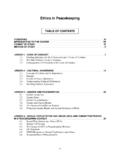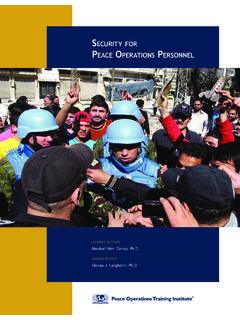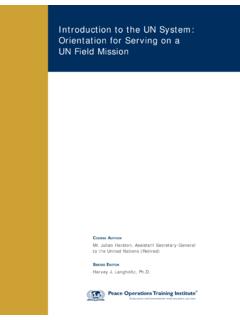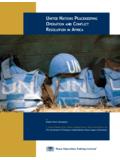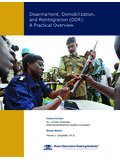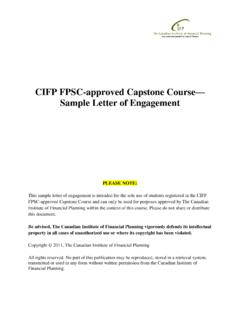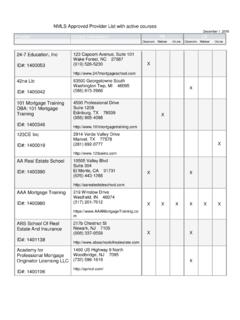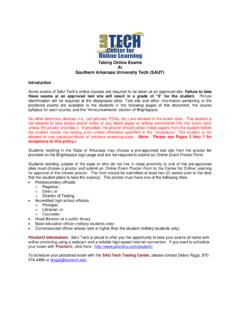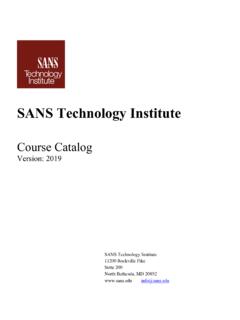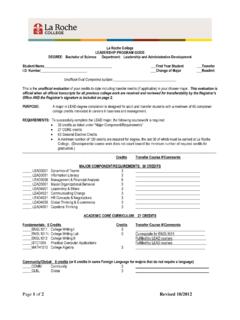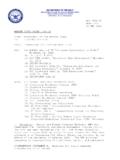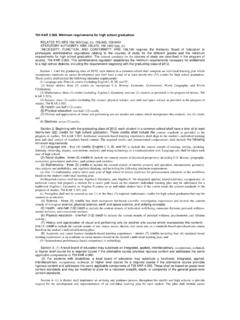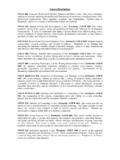Transcription of PrinciPles and Guidelines for un PeacekeePinG …
1 Peace Operations Tr aining Institute PrinciPles and Guidelines forun PeacekeePin G oPerationsSERIES EDITORH arvey J. Langholtz, EDITORH arvey J. Langholtz, in Consultation with PeacekeePinG Best Practices SectionPolicy, Evaluation and Training DivisionUnited Nations Department of PeacekeePinG OperationsanDGeneral Robert Gordon Co-drafter of the Original PublicationPeace Operations Tr aining Institute PrinciPles and Guidelines forun PeacekeePin G oPerations 2010 Peace Operations Training Institute. All rights Operations Training Institute1309 Jamestown Road, Suite 202 Williamsburg, VA 23185 edition: October 2010 Cover: UN Photo #200148 by Christopher HerwigNote: The content for PrinciPles and Guidelines for UN PeacekeePinG Operations is reproduced with permission from the PeacekeePinG Best Practices Section of the Division of Policy, Evaluation, and Training in the United Nations Department of PeacekeePinG material contained herein does not necessarily reflect the views of the Peace Operations Training Institute, the course Author(s), or any United Nations organs or affiliated organizations.
2 Although every effort has been made to verify the con-tents of this course , the Peace Operations Training Institute and the course Author(s) disclaim any and all responsibility for facts and opinions contained in the text, which have been assimilated largely from open media and other independent sources. This course was written to be a pedagogical and teaching document, consistent with existing UN policy and doc-trine, but this course does not establish or promulgate doctrine. Only officially vetted and approved UN documents may establish or promulgate UN policy or doctrine. Information with diametrically opposing views is sometimes provided on given topics, in order to stimulate scholarly interest, and is in keeping with the norms of pure and free academic Note from the Series EditorDear Student,Welcome to the course PrinciPles and Guidelines for United Nations PeacekeePinG Operations.
3 This course has been developed in consultation with the PeacekeePinG Best Practices Section of the United Nations Department of PeacekeePinG Operations Policy, Evaluation and Training Division, and the Peace Operations Training Institute. This course is based on the internal DPKO/DFS publication entitled United Nations PeacekeePinG Operations: PrinciPles and Guidelines , which was co-drafted for DPKO by General Robert Gordon and promulgated in March 2008 under the signature of Mr. Jean-Marie Gu henno, then Under-Secretary-General for PeacekeePinG . This course replaces an earlier POTI course entitled PrinciPles for the Conduct of Peace Support is both a complex undertaking and an evolving concept.
4 United Nations PeacekeePinG Operations: PrinciPles and Guidelines which came to be more widely known under its informal name Capstone Doctrine was, by its own assertion, written to define the nature, scope and core business of contemporary United Nations PeacekeePinG operations. The document certainly lives up to that original United Nations PeacekeePinG Operations: PrinciPles and Guidelines is a comprehensive document that defines and promulgates available PeacekeePinG doctrine, definitions, procedures, and policy. In 10 chapters, it introduces the concept and evolution of UN PeacekeePinG , explains the decision process that precedes the deployment of a PeacekeePinG operation, and then the planning process to implement that decision.
5 It discusses the art of successful mandate implementation. It discusses the management of PeacekeePinG operations, how operations are supported and sustained, and how they are concluded at their termination. This course is designed as a teaching document, and it is the purpose of this course to teach this DPKO doctrine. Every word of the original internal UN document is provided as the core reading of this course , but here the student will also find chapter introductions, learning objectives, photos to illustrate the text, inserted text boxes that define or explain specific concepts, sidebars that explain relevant broader topics, quizzes to confirm and reinforce an understanding of each chapter, and an End-of- course Examination to test the student s overall mastery of the materials.
6 In addition, the course includes reprints of some relevant reference materials, and where the materials are too large to be included, a web URL is provided. Students enrolled in this course will also have the opportunity to interact online with other students of the course and can find additional online resources provided by the Peace Operations Training Institute. Students who pass the online End-of- course Examination will be provided with their own downloadable Certificate of have designed the visual appearance of this course to enable students to easily differentiate the original text as contained in United Nations PeacekeePinG Operations: PrinciPles and Guidelines from text that has been added for teaching purposes.
7 In each chapter, all text found under the headings Learning Objectives and Introduction, as well as the text found within the blue text boxes, has been added by the Peace Operations Training you for enrolling in this course , and thank you also for your interest in United Nations PeacekeePinG . I trust you will be pleased with the materials you find in the following pages. I wish you every success in your LangholtzExecutive Director, Peace Operations Training InstituteFOREWORD BY JEAN-MARIE GU HENNO ..viiINTRODUCTION: SCOPE AND PURPOSE OF THE DOCUMENT ..viiiMETHOD OF STUDY ..xPART I: THE EVOLUTION OF UNITED NATIONS PeacekeePinG OPERATIONS 11 54 CHAPTER 1: THE NORMATIVE FRAMEWORK FOR UNITED NATIONS PeacekeePinG OPERATIONS.
8 The Charter of the United Nations .. Human Rights .. International Humanitarian Law .. Security Council Mandates ..19 CHAPTER 2: THE EVOLVING ROLE OF UNITED NATIONS PeacekeePinG OPERATIONS .. The Spectrum of Peace and Security Activities .. Linkages and Grey Areas .. The Core Business of United Nations PeacekeePinG Operations .. Peacebuilding Activities .. Supporting Other Actors ..38 PrinciPles and Guidelines forun PeacekeePin G oPerationsCHAPTER 3: THE BASIC PrinciPles FOR UNITED NATIONS PeacekeePinG .. Applying the Basic PrinciPles of United Nations PeacekeePinG .. Other Success Factors ..49 PART II: PLANNING UNITED NATIONS PeacekeePinG OPERATIONS 55 74 CHAPTER 4: DECIDING TO DEPLOY A UNITED NATIONS PeacekeePinG OPERATION.
9 Assessing the Options for United Nations Engagement .. Key Lessons for Planners and Decision Makers .. The Importance of Consultations with Contributing Countries ..62 CHAPTER 5: PLANNING A UNITED NATIONS PeacekeePinG OPERATION .. The Integrated Approach .. The Integrated Mission Planning Process (IMPP) ..71 PART III: THE ART OF SUCCESSFUL MANDATE IMPLEMENTATION 75 120 CHAPTER 6: DEPLOYMENT AND START-UP OF UNITED NATIONS PeacekeePinG OPERATIONS .. Typical Phases of Deployment .. The Mission Start-Up Process .. Managing the Mission Start-Up Process ..81 CHAPTER 7: MANAGING UNITED NATIONS PeacekeePinG OPERATIONS .. The Relationship between Headquarters and the Field.
10 The Challenge of Mission Integration and Coordination ..89 CHAPTER 8: SUPPORTING AND SUSTAINING UNITED NATIONS PeacekeePinG OPERATIONS .. United Nations Logistics and Administration .. Human Resource Management .. Security of Personnel ..102 CHAPTER 9: MAINTAINING SUPPORT FOR THE MISSION .. Managing Mission Impact .. Communications and Outreach ..108 CHAPTER 10: TRANSITION AND EXIT .. Partnerships and Transition Planning .. Hand-Over and Withdrawal ..116 REFERENCE DOCUMENTS 121 200 ANNEX 1: UNITED NATIONS PeacekeePinG DOCTRINE FRAMEWORK ..122 ANNEX 2: SELECTED GLOSSARY OF ACRONYMS AND TERMS* ..124 APPENDIX A: LIST OF UN PeacekeePinG OPERATIONS ..129 APPENDIX B: THE UNIVERSAL DECLARATION OF HUMAN RIGHTS.
